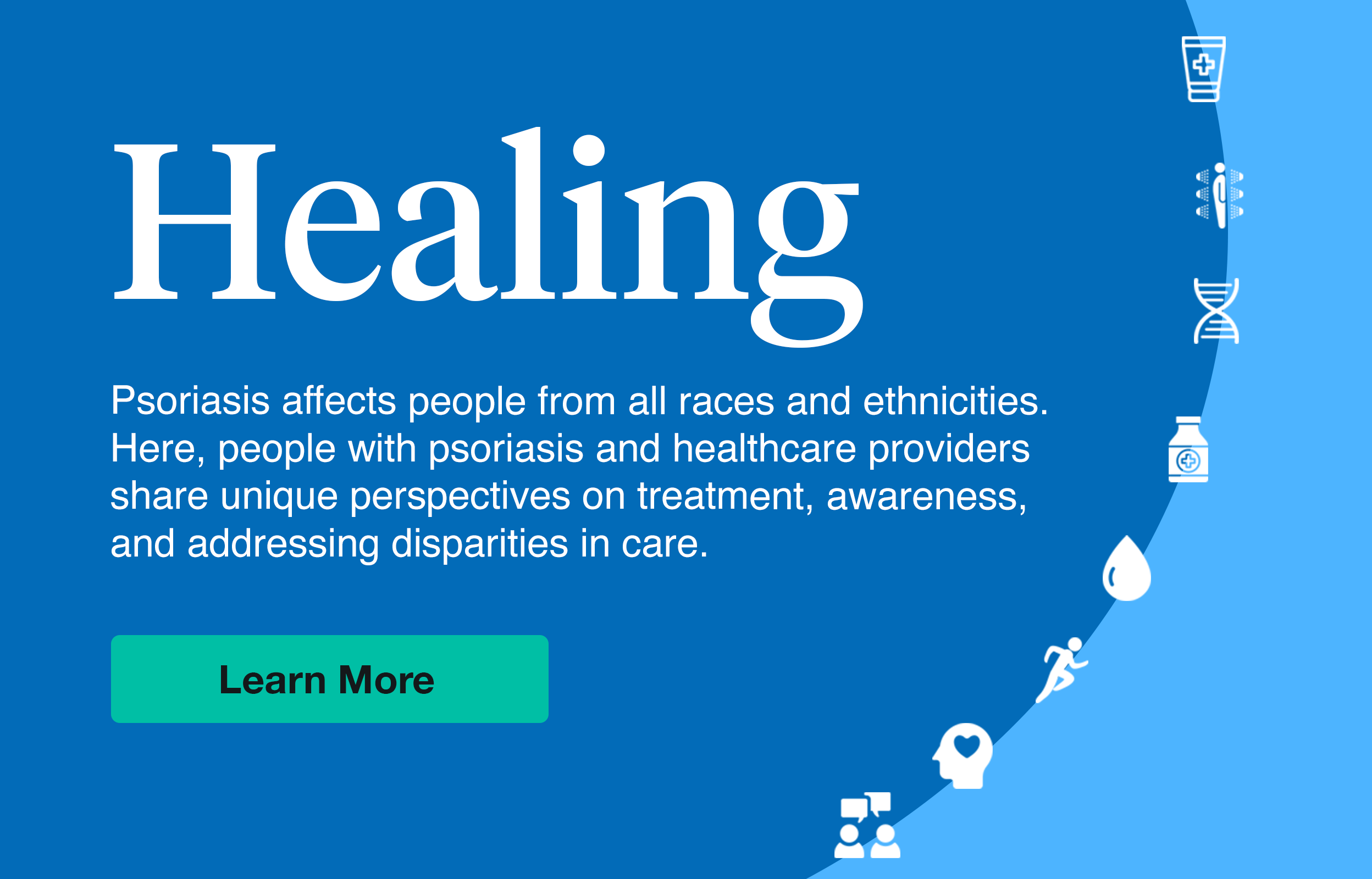Psoriatic disease refers to a pair of related inflammatory disorders—psoriasis and psoriatic arthritis. One affects the skin, while the other affects the joints, but both share a common factor—abnormal immune activity that promotes inflammation.
Psoriasis
Psoriasis is a chronic skin disorder that can cause a number of uncomfortable symptoms. The most common type of psoriasis is plaque psoriasis, which causes thickened patches of raised skin, called plaques. These plaques have a silvery/scaled texture, and can appear anywhere on the body, though most commonly appear on the elbows, knees, lower back, and scalp.
In addition to plaque psoriasis, there are other types of psoriasis, which can cause a wide variety of symptoms. These symptoms range from small, round red dots (guttate psoriasis), to bright red lesions in the folds of the skin (inverse psoriasis), and pus-filled blisters (pustular psoriasis). There are even two types of psoriasis that can be life threatening—Von Zumbusch pustular psoriasis and erythrodermic psoriasis. Both types are rare, but cause widespread symptoms across the body, and can be accompanied by a number of serious complications, including fluid loss, severe pain and itching, fever, and increased heart rate. Both require immediate medical care.
Though it causes skin symptoms, and can be triggered by irritation and injury to the skin, psoriasis is not strictly a skin condition—it is associated with abnormal immune activity and inflammation. Symptoms manifest when inflammatory immune cells enter the skin and disrupt the normal lifecycle of skin cells.
However, this inflammatory response is not only limited to the skin, and can also affect other areas of the body, including the joints.
Psoriatic arthritis
As many as 30 percent of people with psoriasis will develop psoriatic arthritis, where abnormal immune activity results in symptoms like swelling, tenderness, pain, and stiffness in the joints—and can lead to permanent joint damage and disability.
The onset of psoriatic arthritis is typically after onset of psoriasis, and for most people occurs about 10 years after psoriasis symptoms begin. However, for some patients, psoriatic arthritis symptoms appear before skin symptoms, or begin simultaneously with skin symptoms. Symptoms can appear gradually, or suddenly, and psoriatic arthritis can affect any joint in the body—small joints in the hands and feet, larger joints like the knees and hips, even the spinal column.
In addition to affecting the joints, psoriatic arthritis is associated with a number of other symptoms and issues, including nail psoriasis, swelling of the fingers and/or toes (called dactylitis), swelling of the tendons or tendon sheaths, and inflammation in the eyes. Additionally, both psoriasis and psoriatic arthritis are associated with an increased risk of other health conditions, such as cardiovascular disease and type 2 diabetes.
Treatment
Treatment for psoriasis will depend on a number of factors, including the areas of the body affected and the impact that the disorder has on a person’s quality of life. Patients with mild psoriasis may only require topical treatments. Patients with more severe psoriasis may need systemic treatments, such as immunosuppressant drugs or biologic therapies.
Treatment for psoriatic arthritis also depends on a number of factors, including the joints affected and the severity of symptoms. Patients with mild and occasional symptoms may be able to manage psoriatic arthritis with non-steroidal anti-inflammatory drugs (NSAIDs). For more severe or persistent symptoms, a patient may require systemic treatments—several systemic treatments for psoriasis are also indicated for psoriatic arthritis. Physical therapy may also be a part of a treatment plan, to promote and protect the mobility of joints.
Maintaining a health bodyweight, staying active, eating a healthy diet, and limiting or eliminating exposure to factors that promote inflammation (such as alcohol and cigarette smoke) are also recommended for both psoriasis and psoriatic arthritis. These lifestyle factors are also important for reducing the risk of other diseases and promoting overall physical and mental health.
The most important thing to do if you have psoriasis, psoriatic arthritis, or both is to work with a healthcare provider who understands psoriatic disease and can help you find a treatment plan that works for you.





